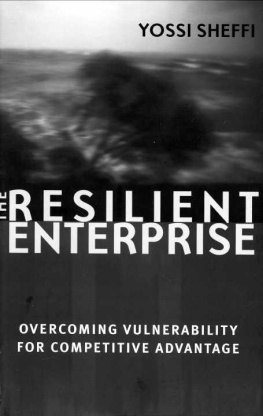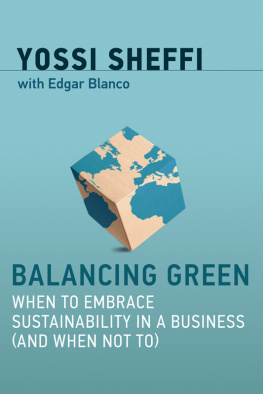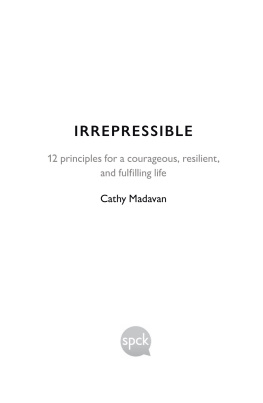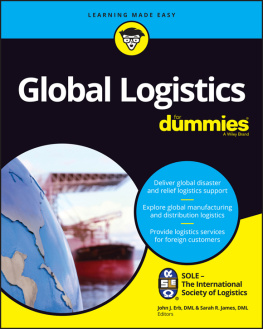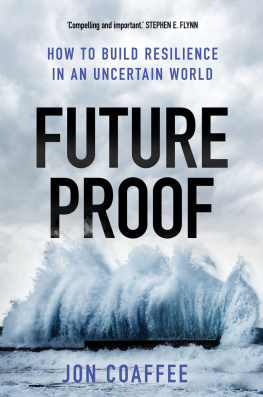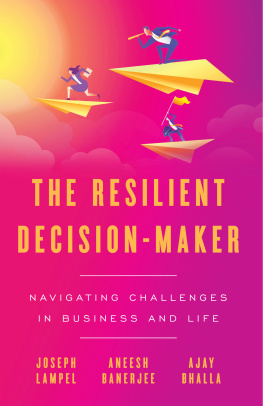Yossi Sheffi - The Resilient Enterprise: Overcoming Vulnerability for Competitive Advantage
Here you can read online Yossi Sheffi - The Resilient Enterprise: Overcoming Vulnerability for Competitive Advantage full text of the book (entire story) in english for free. Download pdf and epub, get meaning, cover and reviews about this ebook. year: 2007, publisher: The MIT Press, genre: Romance novel. Description of the work, (preface) as well as reviews are available. Best literature library LitArk.com created for fans of good reading and offers a wide selection of genres:
Romance novel
Science fiction
Adventure
Detective
Science
History
Home and family
Prose
Art
Politics
Computer
Non-fiction
Religion
Business
Children
Humor
Choose a favorite category and find really read worthwhile books. Enjoy immersion in the world of imagination, feel the emotions of the characters or learn something new for yourself, make an fascinating discovery.
- Book:The Resilient Enterprise: Overcoming Vulnerability for Competitive Advantage
- Author:
- Publisher:The MIT Press
- Genre:
- Year:2007
- Rating:4 / 5
- Favourites:Add to favourites
- Your mark:
The Resilient Enterprise: Overcoming Vulnerability for Competitive Advantage: summary, description and annotation
We offer to read an annotation, description, summary or preface (depends on what the author of the book "The Resilient Enterprise: Overcoming Vulnerability for Competitive Advantage" wrote himself). If you haven't found the necessary information about the book — write in the comments, we will try to find it.
What happens when fire strikes the manufacturing plant of the sole supplier for the brake pressure valve used in every Toyota? When a hurricane shuts down production at a Unilever plant? When Dell and Apple chip manufacturers in Taiwan take weeks to recover from an earthquake? When the U.S. Pacific ports are shut down during the Christmas rush? When terrorists strike? In The Resilient Enterprise, Yossi Sheffi shows that companies fortunes in the face of such business shocks depend more on choices made before the disruption than they do on actions taken in the midst of it -- and that resilience benefits firms every day, disaster or no disaster. He shows how companies can build in flexibility throughout their supply chains, based on proven design principles and the right culture -- balancing security, redundancy, and short-term profits. And he shows how investments in resilience and flexibility not only reduce risk but create a competitive advantage in the increasingly volatile marketplace.Sheffi describes the way companies can increase security -- reducing the likelihood of a disruption -- with layered defenses, the tracking and analysis of near-misses, fast detection, and close collaboration with government agencies, trading partners, and even competitors. But the focus of the book is on resilience -- the ability to bounce back from disruptions and disasters -- by building in redundancy and flexibility. For example, standardization, modular design, and collaborative relationships with suppliers (and other stakeholders) can help create a robust supply chain. And a corporate culture of flexibility -- with distributed decision making and communications at all levels -- can create a resilient enterprise.Sheffi provides tools for companies to reduce the vulnerability of the supply chain they live in. And along the way he tells the stories of dozens of enterprises, large and small, including Toyota, Nokia, General Motors, Zara, Land Rover, Chiquita, Aisin Seiki, Southwest Airlines, UPS, Johnson and Johnson, Intel, Amazon.com, the U.S. Navy, and others, from across the globe. Their successes, failures, preparations, and methods provide a rich set of lessons in preparing for and managing disruptions. Additional material available at www.TheResilientEnterprise.com.
In 2005, Professor Yossi Sheffi from the Massachusetts Institute of Technology wrote a seminal work entitled _The Resilient Enterprise_ that examined disruptions in corporate supply chains. The very first chapter in that book was entitled Big Lessons from Small Disruptions. It unfolds a story about how a St. Patricks Day (17 March 2000) lightning strike in Albuquerque, New Mexico, started a fire in Fabricator No. 22 of a Phillips NV chip manufacturing plant which led to unforeseen long-term consequences. Alert plant employees and automatic sprinklers put the fire out in less than ten minutes. Sheffi wrote, A routine investigation showed that the fire had been minor. Nobody was hurt and the damage seemed superficial. The blaze did not make headlines in Europe, did not appear on CNN, and did not even appear in the Albuquerque newspapers....The fire had directly ruined only eight trays of wafers but smoke from the fire spread beyond the immediate area and, along with soot spread by workers and firefighters, contaminated much of the rest of plant. A minor fire had turned into a major disaster. Sheffi reported that Phillips notified its 30-plus customers about potential delays in chip production but predicted the delay would only be about a week...as soon as it [Nokia] realized that the delay was actually going to be weeks or months, it took action...Ericsson wasnt quite so lucky. Sheffi reported that Ericsson executives received the same telephone call from Phillips as Nokia but they reacted very differently. They believed that the delay would be a short one...According to Sheffi, Ericssons lack of a Plan B cost the company around half a billion dollars.Yossi Sheffi: author's other books
Who wrote The Resilient Enterprise: Overcoming Vulnerability for Competitive Advantage? Find out the surname, the name of the author of the book and a list of all author's works by series.

